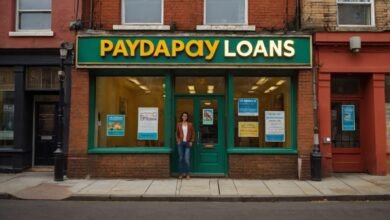Comprehensive National Debt Relief Reviews: An In-depth Guide for 2024
National Debt Relief Reviews

Table of Contents
ToggleComprehensive National Debt Relief Reviews: An In-depth Guide for 2024
Comprehensive Review of National Debt Relief
Learn everything about National Debt Relief, its pros and cons, and real client experience. Explore our in-depth review of National Debt Relief services in 2024. The largest debt settlement firm in the United States of America, according to customer complaints.
Established to facilitate better coping with ever-swelling debt amounts, NDR has successfully guided thousands of consumers in overcoming their debt problems. This detailed book is aimed to provide the readers with all the assistance needed about what national debt relief reviews entail and all the advantages and disadvantages regarding being part of the program. Before you end this article, there’s much to guide whether National Debt Relief is good for you.
What is National Debt Relief, and how can it help?
Debt Relief Services: A Special Overview:
National Debt Relief offers debt settlement services for those needing assistance with unsecured debts, such as those associated with credit cards, medical expenses, and credit/PERSONAL loans. Debt settlement is working out a new deal with the creditors whereby the total outstanding balance is paid in part or at a lower total balance.
Finally, when an agreement has been reached, the debtor makes a one-time payment or periodic payments to the creditor to clear the debt. Based on several factors, these steps generally culminate in a no-debt condition in 24-48 months.
How to get the National Debt Relief Program:
- Initial Consultation: The operation steps include the initial free consultation, where the company looks into your financial state with advice about the options available to you on how you can deal with the debt.
- Enrollment: If you are approved, you join the program, and National Debt Relief starts working to pay your creditors. It is suggested that, during this period, you do not make any more payments to your creditors because this has been found to encourage them to negotiate very often.
- Creating a Dedicated Account: During this process, you will establish what is known as a special savings account. Rather than paying your creditors monthly, you will transfer an agreed amount to this account each month, to be applied against the agreed settlements once they have been worked out.
- Negotiation: National Debt Relief will then make deals with your creditors, which usually include offering them a smaller amount to be allowed to pay off the entire amount owed to them. Creditors make these terms acceptable as it means getting something rather than nothing.
- Settlement: Upon confirmation from the creditor, the debt settlement process is arrived at; those saved in your special account are used to effect the payment.
Who Needs National Debt Relief?
Most Suitable Recipients of Debt Relief Schemes:
National Debt Relief is particularly beneficial for individuals with unsecured debts, such as:
- Credit card balances
- Medical bills
- Personal loans
- Certain student loans
In other words, if you’re stuck with trying to meet your minimum monthly payments, have multiple high-interest debts or are thinking of bankruptcy, National Debt Relief may suit you. This program is perfectly suitable for individuals who experience financial difficulties but still have a stable income to make comparatively small payments to the special account.
Circumstances by Need for Credit Relief:
Debt relief is another important option for those who have attempted to pay their debts bearing in mind the amount of money they were earning and proofing in other areas such as consolidation, budgeting, or credit counseling but to no avail. Also, those who target to become free from all their debts in five years can apply for debt relief as the easiest way to become free.
Pros of National Debt Relief:
Debt Reduction and Settlement:
This company also offers the possibility to considerably, or even significantly, lower the amount of debt that must be paid out. An individual client shall typically be left with between 30%/50% of his unsecured debts. This reduction enables people to clear their credits at a token amount of the original amount that they loaned, thus restoring financial stability to one’s credit status.
Sone’s Monthly Payment Option:
Rather than paying several bills several times a month, National Debt Relief combines all due dates into one. This makes the payments involving debts easier and minimizes the possibility of the client missing payments.
Reduction in Collection Calls:
Once you sign with National Debt Relief, the company is responsible for interacting with your creditors. This encompasses dealing with collection agencies, which, quoting studies, greatly helps to lessen the amount of pestering phone calls and collection letters you are likely to receive.
Cons of National Debt Relief:
Negative Credit Score Impact:
The major disadvantage of participating in a debt relief program is that it is known to take a negative toll on your credit rating. Since you are recommended to cease making payments to your creditors while under this process, this brings about a low credit score. But, once again, even though debts are a determinant of credit scores, it is possible to observe their gradual increase as soon as the debts are paid.
Tuition and Charges associated with Joining a Debt Relief:
National Debt Relief offers services, and normally, it claims for its fees of 15% – 25% of the total enrolled amount of debt. These fees are then cut from the amount of money that was saved when going for debt settlement. These costs must be taken against the possible savings when considering whether to join the program enrollment.
Length of Time for Debt Resolution:
Unlike some of National Debt Relief’s competitors, Relief’s debt is cleared in 24 to 48 months, although for those in distress, such a period may seem long. Patience is needed; however, during this time, you could still receive calls about collection and other issues related to debt.
National Debt Relief vs Other Debt Relief Options:
Debt Relief, Debt Consolidation and Bankruptcy – A Comparison:
t is critical to draw some analogy between National Debt Relief and some other options, such as debt consolidation, on the one hand, and bankruptcy, on the other hand.
- Debt Relief involves mainly negotiating with creditors to accept lesser amounts than originally agreed upon, reducing the total number of debts.
- Debt Consolidation: Refers to uniting different debts and having one bank with a fixed interest rate, which means easier repayment but does not minimize the amount you owe.
- Bankruptcy: A legal method for removing civil obligations with money but an incredibly damaging and long-standing effect on credit score.
Like in any other decision-making process, the advantages and disadvantages of each form largely depend on your total amount of outstanding debt, your income, and how soon financial help is needed.
National Debt Relief: Understanding the Rates:
Fee structure determinations:
National Debt Relief is a performance-based fee service. Therefore, there is no upfront fee before a settlement is made. They charge a handsome amount of brokerage fees, which fall between 15% to 25% of the enrolled debt of the people they work for.
Major factors include the length of the negotiation process or the level of negotiating difficulty. One important thing to note is that these fees are charged on the savings made over the program.
Is National Debt Relief Worth the Investment?
Some factors would give many people an advantage in eliminating debts, and the fees that National Debt Relief offers could offset these benefits. However, you should be okay with the long-term commitment to the program and the short-term impact on your credit status.
What is said about Nation by its Clients:
Positive Client Experiences:
Most clients have interacted greatly with the National Debt Relief organization, especially acknowledging the company’s efficient increase in large debts. I think the clients appreciate the ability to make one small monthly payment and observe the payments made toward their debts.
Common Complaints from Clients:
On the other hand, the sources reveal that clients have also expressed dissatisfaction with the number of years it takes to clear the debts, plus the drop in credit. Besides, there are concerns about the fees, some of which are pricey, especially when you are in a compromising financial situation.
Legal and Ethical Considerations for Debt Relief Programs:
Is National Debt Relief A Real Program?
Yes, this is an existing and accredited business that could help consumers bring relief to the national debt. Many of such firms offering to help already have grievances over the evil nature of such firms that provide to relieve people of their debts, so to avoid any hasty plunge, it would be best to refer to a company that is a member of the American Fair Credit Council and has an open accreditation in the Better Business Bureau.
Compliance with Debt Relief Laws:
National Debt Relief complies fully with federal and state laws governing debt settlement services. You should always ensure that any debt relief company you will work with is approved to work in their state for the sake of protecting themselves.
The Process of Enrolling in National Debt Relief:
Initial Consultation and Assessment:
The first in this process involves offering a free consultation where a debt relief professional will speak to you and establish if you qualify for the program. This free consultation lets you determine whether you are eligible for debt relief.
Developing a Personalized Debt Relief Plan:
National Debt Relief, if you decide to continue, will assist you in designing a special plan that suits your requirements. This plan will detail how much you’ll have to put in each month, with which creditor negotiations will be conducted, and a likely approximate time frame for regaining freedom from debts.
Is National Debt Relief a Good Fit for You?
Factors to Consider Before Enrolling
Before enrolling in National Debt Relief, it’s important to consider several factors, including:
- Current debt load: That leads to my question: How much debt do you have, and is it unsecured?
- Impact on credit: Are you ready to take the impact of your score, at least for a little while?
- Monthly savings: Are you able to deduct some money to deposit every month in your settlement account?
How to Evaluate Your Debt Relief Options
Since many companies offer debt relief services, it is wise to seek the services of several companies. Choose a company with customer reviews and information about fees and what processes to follow to become debt-free.
Conclusion
Key Takeaways and Final Thoughts
Regarding uncollateralized debts, National Debt Relief offers a well-organized remedy for some struggling individuals. Some benefits are obvious, e.g., a controlled decrease in installment debts, fewer payments, and the prevention of annoying collection calls. However, giving equal importance to the disadvantages is also important, including the effect on your credit rating and the dues that are paid or would have to be paid.
Available options include debt relief programs offered by reputable non-profit organizations like National Debt Relief. Nevertheless, it is advisable to give any program some thought and do thorough research before signing up.
Frequently Asked Questions (FAQs)
What types of debt are eligible for National Debt Relief?
National Debt Relief primarily works with unsecured debts, including credit card debt, medical bills, and personal loans. They don’t work on secured properties, and they don’t like mortgaged properties or car loans.
How long does the debt relief process take?
The debt relief process typically takes between 24 and 48 months, depending on the amount of debt and the success of negotiations with creditors.
Will debt collectors stop calling once I enroll?
While National Debt Relief takes over communication with your creditors, some collection calls may continue until a settlement is reached.
Does National Debt Relief work with all creditors?
National Debt Relief works with most major creditors, but some may be more challenging to negotiate with than others. It’s important to ask whether your specific creditors are willing to negotiate through a debt relief program.
Can I withdraw from the program?
Yes, you can withdraw from the program at any time. Still, it’s important to understand that doing so may have financial consequences, such as creditors’ resumption of collection efforts.
What are the risks of using National Debt Relief?
The primary risks include a temporary reduction in your credit score, fees charged by the company, and the possibility that not all debts will be successfully settled.
“TO READ MORE ARTICLES” SO CLICK HERE“
Suggestions LINK’S: “Lytle Loans AtLINK’SN: How to Secure Fast and Reliable Loans Locally
How to Navigate the World of Online Payday Loans Without Getting Trapped








